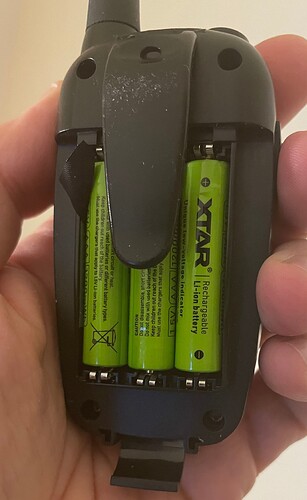This is what i use in my kids radio, no interference issues.
@Lightbringer - Roger that. I guess perhaps it figures it might affect the I/O in the little gadget first. I always consider RF - it’s an old habit from my youth. I wish I still had access to all the test equip I used to - I’d answer my own questions, but I don’t. After all, these things are not ‘our father’s dry cells’, they’re little power supplies; albeit self-contained. Where I come from, power supplies have specs, and they include ‘noise’. These mfgrs. are trying to cross over the line and dip their toes into power supplies, but without playing by power supply rules. I consider that either irresponsible or clueless, take your pick. It doesn’t help when they ignore my questions, either.
That said, it may not stop me from trying them - with caution. There’s a zillion times more RF around in this world than in the past. Whether it’s ‘wi-fi’, BT, my headphones, or my A/V remotes, it’s everywhere. We’ll see. Even though some (XTAR) are dealing with the ‘sudden death syndrome’ thing of going flat line at low voltage threshold for the basic cell without warning, which has almost made me decide to try them, I think the jury’s still out on the RF thing.
(I wonder if the FCC has anything to say about these?)
Those look a lot like these. Hmmmm…
That clock/weather station isn’t looking too good.
yea, it did not for him, works for me, depends on a device, unless you try it in your particular device, you will not know for sure, i would think different brands of batteries may act differently as well, rightfully noted, they are complex devices vs simple dry cell.
I like that the XTAR ones have a 1.1v low mode before shutting off. There’s even an indicating led by the positive nipple. I mean, it’ll probably be in a light and you’d be unable to see it, but neat none the less. And a 2A cdr. Not bad. Not a big fan of the………interesting downsides XTAR claim that nimh have. Like memory and poor discharge graphs, but they may have a usable advantage in low draw devices. I’ll do a runtime test and see how they do
This can an advantage, or it can be a disadvantage.
Good if device still works with 1.1v, but if used with a device which does not work with ni-mh it is highly likely that 1.1v will be too low and device will simply turn off immediately once converter switches to 1.1v. Which means still no useful indication and even lower usable capacity…
I found there’s some current limiting going on too here as the light was too dim to be at 1.1v. So I don’t think there’s much capacity left by the time it steps down.
